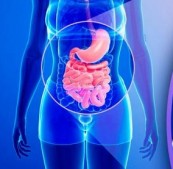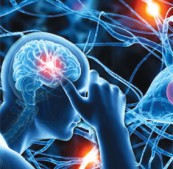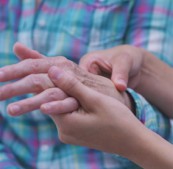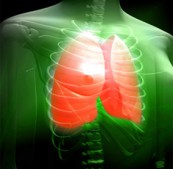Amyotrophic Lateral Sclerosis

Amyotrophic lateral sclerosis (ALS), also known as Lou Gehrig's disease, is a degenerative disorder of specific nerve cells of the spinal cord, brain stem and brain. It belongs to a group of disorders known as motor neuron diseases, and results in the gradual loss of voluntary muscle control leading to paralysis.
The ALS can be co related as ‘KaphaavritaVata’ condition mainly praana, udaana and vyaanavata according to Ayurveda.
ALS is characterized by stiff muscles, muscle twitching, and gradually worsening weakness due to muscles decreasing in size. This results in difficulty speaking, swallowing, and eventually breathing.
Brief with types
There are two types of ALS:
- Sporadic ALS is the most common form. It affects up to 95% of people with the disease. Sporadic means it happens sometimes without a clear cause.
- Familial ALS (FALS) runs in families. About 5% to 10% of people with ALS have this type. FALS is caused by changes to a gene. Parents pass the faulty gene to their children. If one parent has the gene for ALS, each of their children will have a 50% chance of getting the gene and having the disease.
ALS can be classified by the types of motor neurons that are affected. Typical or "classical" ALS involves neurons in the brain (upper motor neurons) and in the spinal cord (lower motor neurons).
Primary lateral sclerosis (PLS) involves only upper motor neurons, and progressive muscular atrophy (PMA) involves only lower motor neurons. There is debate over whether PLS and PMA are separate diseases or simply variants of ALS.
Classic ALS accounts for about 70% of all cases of ALS and can be subdivided into
- Spinal-onset ALS
Spinal-onset ALS, also called limb-onset ALS, begins with weakness in the arms and legs and accounts for about two-thirds of all cases of classic ALS.
- Bulbar-onset ALS.
Bulbar-onset ALS begins with weakness in the muscles of speech, chewing, and swallowing and accounts for about one-third of all cases of classic ALS.
Signs & Symptoms(Lakshana):
The earliest symptoms of ALS are:
- muscle weakness
- muscle atrophy.
Other presenting symptoms include
- trouble swallowing or breathing,
- cramping, or stiffness of affected muscles;
- muscle weakness affecting an arm or a leg; or
- slurred and nasal speech.
The parts of the body affected by early symptoms of ALS depend on which motor neurons in the body are damaged first. The disease eventually spreads to unaffected regions and the affected regions become more affected. Most people eventually are not able to walk or use their hands and arms, lose the ability to speak and swallow food and their own saliva, and begin to lose the ability to cough and to breathe on their own. Difficulty in chewing and swallowing makes eating very difficult and increases the risk of choking or of aspirating food into the lungs. In later stages of the disorder, aspiration pneumonia can develop, and maintaining a healthy weight can become a significant problem that may require the insertion of a feeding tube. As the diaphragm and muscles of the rib cage that support breathing weaken, measures of lung function such as vital capacity and aspiratory pressure diminish. In respiratory-onset ALS, this may occur before significant limb weakness is apparent. Most people with ALS die of respiratory failure or pneumonia.
In limb-onset ALS, people first experience awkwardness when walking or running or even tripping over or stumbling with a "dropped foot" which drags gently on the ground. Or if arm-onset, difficulty with tasks requiring manual dexterity such as buttoning a shirt, writing, or turning a key in a lock may be experienced.
In bulbar-onset ALS, initial symptoms will mainly be of difficulty speaking clearly or swallowing. Speech may become slurred, nasal in character, or quieter. There may be difficulty in swallowing and loss of tongue mobility. A smaller proportion of people experience "respiratory-onset" ALS, where the intercostals muscles that support breathing are affected first.
Causes(Nidana)
Genetic Factors
ALS can be classified as familial or sporadic, depending on whether or not there is a family history of the disease. The strictest definition is that a person with ALS must have two or more first-degree relatives (children, siblings, or parents) who also have ALS. A less strict definition is that a person with ALS must have at least one first-degree or second-degree relative (grandparents, grandchildren, aunts, uncles, nephews, nieces or half-siblings) who also has ALS. Familial ALS is usually said to account for 10% of all cases of ALS, though estimates range from 5% to 20%. Higher estimates use a broader definition of familial ALS and examine the family history of people with ALS more thoroughly.
Environmental Factors
In a 2017 study by the United States Centers for Disease Control and Prevention analyzing U.S. deaths from 1985 to 2011, occupations correlated with ALS deaths were white-collar, such as in management, financial, architectural, computing, legal, and education jobs. Other potential risk factors remain unconfirmed, including chemical exposure, electromagnetic field exposure, occupation, physical trauma, and electric shock. There is a tentative association with exposure to various pesticides, including the organochlorine insecticides aldrin, dieldrin, DDT, and toxaphene.
Sports
Some NFL players thought to have died from ALS may have actually had chronic traumatic encephalopathy (CTE), a neurodegenerative disorder associated with multiple head injuries that can present with symptoms that are very similar to ALS.
Treatments :
Treatment includes Panchakarma Therapy in which it includes
- Rookshana
- Snehana
- Njavara kizhi
- Patra potali sweda
- Basti
- Nasyam
Additional Treatment
- Psychological and physical support, with the help from occupational and speech therapists and physiotherapists, is essential to maintain the patients quality of life.
- Mechanical aids such as splints,walking aids, wheel chair, communication devices, etc. reduce handicap. Feeding percutaneous gastrostomy may be needed if necessary because of bulbar failure.
- Non-invasive ventilator support has been shown to improve the quality of life by alleviating symptoms from weak respiratory muscles and has a small effect on prolonging life.
- Relief of distress in terminal stages usually requires the use of opiates and sedative drugs.
Prevention
These are the actions and food which are to be avoided for prevention of ALS as it is responsible for the vitiation of Vata according to Ayurveda
- Excess amount of exercise, the measures which are leading to the lightness of the body,falling from height,
- the manoeuvres which are leading to Dhatukshaya (depletion of body elements)in the body,
- depriving of sleep during night time,
- suppression of the natural urges,
- exposure to cold atmosphere,
- excess consumption of substances having Ruksha (dry) quality,
- excess consumption of food substances having Kashaya (astringent), Katu (pungent) and Tikta (bitter) taste





